It has an internal skeleton (like us!) Some females also have horns, which are usually smaller than those of males. During the molting process, an animal is without an exoskeleton and is therefore particularly vulnerable. Morphologically, it is true that the pharyngula-stage embryo in vertebrates is the stage at which the basic body plan, or a set of homologous anlagen, of this animal group becomes established. It was thus speculated that the trunk neural crest is normally suppressed from differentiating into the exoskeleton in animals that have lost most of the postcranial exoskeleton, which, however, can be reactivated under specific circumstances. Acta Palaeontol Pol 2010, 55:213228. Webexoskeleton, rigid or articulated envelope that supports and protects the soft tissues of certain animals. Some species of cicada live underground for the first 2-17 years of their lives. In resulting chimeras, these grafted cells gave rise to a skeletal element, which in birds is normally derived from the mesoderm. Another finding that appeared to strengthen this assumption was that the differentiation repertoire of the neural crest is not entirely predetermined differentially along the anteroposterior axis (head versus trunk); heterotopically transplanted trunk neural crest can exhibit skeletogenic potency in the head environment of the embryo [122] (also see [123] for a similar experiment; also see [124]). New embryonic technologies have apparently dispelled the above unsubstantiated assumptions. Taking into consideration the shifts in morphological homologiesspecifically the developmental patterns and processes involved in patterning of the evolutionarily fixed patterns of craniofacial elementsit seems likely that the cranial pattern is specified late relative to the specification of the phylotype. Does eating close to bedtime make you gain weight? (F) Enlarged image of E. The previously mentioned evolutionary shifts in the topographic positions of exoskeletal elements recalls the idea of Holmgren (1940) [27], who suggested that, in some cases, various exoskeletal elements evolved into endoskeleton as the result of a topographic shift (delamination theory). However, in the evolution toward turtles, the thoracic axial skeleton was exposed, owing to loss of the dorsal axial muscles, to form the carapace [12]. Similar situations, in which the homology between structure and gene expression is tightly conserved, include the expression of homeobox genes and primordial segments in the developing vertebrate brain, differentiation of somite-derivatives, and dorsoventral specification of the neural tube (reviewed by [148]). Gross JB, Hanken J: Review of fate-mapping studies of osteogenic cranial neural crest in vertebrates. The Endoskeleton of an animal is present inside the body, which is also known as the internal skeleton. In this review, we first summarize various evolutionary continuities of vertebrate skeletal systems. Zool Sci 2013, 30:944961. Alcian-blue, hematoxylin and eosin stains; scale bar, 100m. One effect is evolutionary novelty and simultaneous loss of homology: the shift in developmental interactions in time and place result in novel regulation of skeletogenic genes, leading to a skeletal pattern incomparable to that in the ancestor. This seems reasonable, given that, like that of trunk somites, chondrification of the mesoderm is understood to require signals that emanate from the notochord. Koyabu D, Maier W, Snchez-Villagra MR: Paleontological and developmental evidence resolve the homology and dual embryonic origin of a mammalian skull bone, the interparietal. (Read more about animal attraction.). Hall BK: The Neural Crest in Development and Evolution. However, the ossification centers maintain their separate entities, implying incompatibility between the endo- and exoskeletons. Frbringer M: ber die spino-occipitalen Nerven der Selachier und Holocephalen und ihre vergleichende Morphologie. These spiders are often mistaken for other non-venomous spiders like the wolf spider. Cebra-Thomas JA, Terrell A, Branyan K, Shah S, Rice R, Gyi L, Yin M, Hu YS, Mangat G, Simonet J, Betters E, Gilbert SF: Late-emigrating trunk neural crest cells in turtle embryos generate an osteogenic ectomesenchyme in the plastron. Claessens LPAM: Dinosaur gastralia; origin, morphology, and function. For example, the endoskeleton consists of bones preformed from cartilage and their evolutionary derivatives, or homologues (Table1) [7]. When its in motion, the kangaroo hops completely clear off the ground, covering up to 30 feet in a single swift motion. PubMed Sea anemones have muscles around their internal cavity that work togethersimilar to how our biceps and triceps maneuver our upper armsto move the animal and escape potential predators, Kier says. Basic Bug Design - Exoskeletons Noden DM: Interactions and fates of avian craniofacial mesenchyme. However, some endoskeletal bones develop solely intramembranously, without any association with cartilage (membrane bones: Table1), and some exoskeletal bones are likewise associated with cartilage. Simpson GG: Tempo and Mode in Evolution. : a close relative of tetrapods? Vespertilio murinus In the chicken, and in other sauropsids as well, this part of the neurocranium contains five somites [43,82]. Baier DB, Gatesy SM, Jenkins FA: A critical ligamentous mechanism in the evolution of avian flight. WebAn exoskeleton is a hard external skeleton that protects the outer surface of an organism and enables movement through muscles attached on the inside. No other large animal of this size has the same ability. Basel: Schwabe & Co; 1969. This potential influence of the local environment recalls the study of Schneider (1999) [139], in which cranial neural crest from the quail embryo was ectopically grafted within mesenchymal populations destined to form the skull wall in the chicken embryo. The distance between the primordial gastralia and the rectus abdominis muscle (ram) decreases. Platt JB: Ectodermic origin of the cartilage of the head. What type of animal are leeches & earthworms? PubMed Central In this model, the Wnt-1 promoter was used to drive Cre to activate a reporter gene as a marker for all neural crest cells. annelid. Narita Y, Kuratani S: Evolution of the vertebral formulae in mammals: A perspective on developmental constraints. The neurocrania and viscerocrania are both recognized as endoskeletons over which a dermal covering, the dermatocranium, develops to encapsulate the entire endocranium. Bailleul AM, Hall BK, Horner JR: First evidence of dinosaurian secondary cartilage in the post-hatching skull of Organ CL: Thoracic epaxial muscles in living archosaurs and ornithopod dinosaurs. 2023 BioMed Central Ltd unless otherwise stated. Exoskeletal bones might be coated with enameloid and dentine tissues, but whether such a trait represents the ancestral or derived state is equivocal, on the sole basis of histological data. Wiedersheim R: Vergleichende Anatomie der Wirbeltiere: Fr Studierende bearbeitet. J Anat 2009, 214:441464. Types of Animals With Exoskeletons (A) Transverse section of the ventral trunk of an embryo at stage 17. many legs does a kangaroo have What kind of skeletal system does the kangaroo have? According to classical theory, transcendental morphologists and others believed that the anteroposterior segmentation of the roof of the dermatocranium merely reflected the pattern of cranial mesodermal segments of hypothetical ancestors (reviewed by [92,113,114]; Figure7A). In The Skull, Vol 2. The exoskeleton can be flexible as its not as solid as the endoskeleton. New York: Oxford University Press; 1988. Difference Between Endoskeleton and Exoskeleton CAS One drawback of an exoskeleton: its too rigid to allow for the animal to grow. Zur Morphologie, Band 2, Heft 2. However, insofar as the criteria for homology largely rest on the relative positions of organs (reviewed by [6]), developmental patterns may, to some extent, explain the impetus behind the manifestation of the homologous patterns. Limits on Animal Size and Shape - Biology LibreTexts This experiment indicates that the developmental factor(s) for the morphological homology resides in the position in the embryo, not in the embryonic cell lineages. The lateral lines are not induced as primordia with any segmental prepatterning (for the developmental pattern of the placodes, see [117] and references therein); therefore, the dermal skull roof elements may form independently of any segmental prepattern. Groups of Animals With Exoskeletons In stem vertebrates basal to the clade of osteostracan-jawed vertebrates, the endoskeleton was composed purely of cartilage (Figure4A). Berlin, Heidelberg, New York: Springer-Verlag; 1979. Bones keep flying fish fins extended, allowing them to function like bird wings. (2012) [73]. No accounts contradict the possibility that skeletal identities similarly shift between neural crest and mesodermal cell populations. Trigeminal crest cells are colored red, hyoid crest cells yellow, and circumpharyngeal crest cells blue. Evol Dev 2012, 14:7692. Their shells typically act as their primary defense against predators as they are able to just go inside and close up, similar to the way some turtles can. California Privacy Statement, Types of Skeletal Systems -Chimaeren. Phylogenetic framework was adopted from [59]. An outer layer of a mollusks tissue, called the mantle, secretes proteins and minerals to form its distinct skeletal sanctuary. Google Scholar. Theexoskeletonof amollusk is made of mostly calcium, compared to the exoskeleton of an arthropod which is made of chitin. Thomson KS: Segmentation, the adult skull, and the problem of homology. Patricia is a wildlife enthusiast that loves traveling and learning about wildlife all over North America and the world. What kind of skeletal system does the kangaroo have? A possible intermediate condition between ancestral and sunken exoskeletons is represented by the gastralia (Figure2). Seashells are the old exoskeletons of clams, oysters, snails, and other sea creatures that live in shells. Postcranial osteoderms (exoskeletal bones) develop in the dermis, presumably regulated by an intimate interaction with the epidermis. Google Scholar. The boundary between these two cell lineages lies in the frontal bone (for the homology of the avian frontal bone, see [8]). Noden DM: Craniofacial development: new views on old problems. The gastralia are a series of segmental rod-like bones that cover the ventral aspect of the abdomen in crocodilians and the tuatara, among living forms. Dinichthys The patterns that allow minimal shifts have been recognized to result from developmental constraint. Evolutionary Morphology Laboratory, RIKEN, 2-2-3 Minatojima-minami, Chuo-ku, Kobe, Hyogo, 650-0047, Japan, You can also search for this author in Do arthropods have an exoskeleton or an endoskeleton? WebAn exoskeleton is a hard external skeleton that protects the outer surface of an organism and enables movement through muscles attached on the inside. Vlker H: ber das Stamm-, Gliedmaen-, und Hautskelet von Dermochelys coriacea L. Webexoskeleton, rigid or articulated envelope that supports and protects the soft tissues of certain animals. Edited by Hertwig O. Jena: Gustav Fischer; 1906:573874. Vickaryous MK, Sire JY: The integumentary skeleton of tetrapods: origin, evolution, and development. Platt (1893) [60] suggested that the ectodermally derived mesenchyme (that is, ectomesenchyme) contributes to the cranial skeleton in basal vertebrates. C) Mapping data in Bombina orientalis based on DiI injection onto the neural fold of the neurula (A). The exoskeleton supports internal organs and tissue. No other large animal of this size has the same ability. Scheyer TM, Snchez-Villagra MR: Carapace bone histology in the giant pleurodiran turtle Couly GF, Coltey PM, Le Douarin NM: The triple origin of skull in higher vertebrates: a study in quail-chick chimeras. Schlosser G: Making senses: development of vertebrate cranial placodes. Tamura K, Nomura N, Seki R, Yonei-Tamura S, Yokoyama H: Embryological evidence identifies wing digits in birds as digits 1, 2, and 3. The two insects charge at each other like jousters, but its the one who picks up the other in his horns and body slams him on the ground that wins. PubMed Central The parachordals secondarily incorporate segmented somitic (vertebrae-like) materials to complete the posteriormost portion, the occipital region [43,90,103-106]. Prog Clin Biol Res 1982, 101:167203. Exoskeleton An exoskeleton is the rigid covering found on the exterior of many animals, particularly invertebrates such as arthropods and mollusks. Nature 2013, 502:188193. Brown recluses get their name from the fact they are very reclusive and keep to themselves, human bites are rare as their fangs are small and cannot bit through clothing. When you click and buy we may earn an affiliate commission at no cost to you. PubMed Oisi Y, Ota KG, Fujimoto S, Kuratani S: Development of the chondrocranium in hagfishes, with special reference to the early evolution of vertebrates. The use of transgenic techniques has revealed the contribution of the neural crest to the skull in teleosts and mammals (Figure5) [70-73]. Correspondence to Kessel M, Balling R, Gruss P: Variations of cervical vertebrae after expression of a A Kangaroo A Mammal, Marsupial Or A millipedes hard exoskeleton is its primary defense from predators and things that would like to make it into a meal. WebContrary to a common misconception, echinoderms do not possess an exoskeleton, as their test is always contained within a layer of living tissue. Oken L: ber die Bedeutung der Schdelknochen. Jarvik E: Basic Structure and Evolution of Vertebrates, Volume 2. Witzmann F: Comparative histology of sculptured dermal bones in basal tetrapods, and the implications for the soft tissue dermis. Developmental origins of the dermal skull roof. Huxley TH: The Croonian Lecture: on the theory of the vertebrate skull. It is conceivable that, especially in animals that go through metamorphosis, insertion of larval stages causes topographical shifts of the neural crest-derived chondrogenic cells that go on to form adult skeletons (although this does not explain the hyoid crest-origin of the prechordal cranium in amphibians as reported by Olsson and Hanken (1996) [110]). The exoskeleton contains a rigid and resistant set of components that fill functional roles to protect, sense, and support the creature. J Mammal 1945, 26:146147. Google Scholar. Alcian-blue, hematoxylin, eosin and immunohistochemistry with anti-acetylated tubulin antibody (T6793, Sigma-Aldrich) stains; scale bar, 100m. J Morphol 2013, 274:627644. Trends Ecol Evol 2012, 27:278287. But, unlike the endoskeleton, the exoskeleton limits how large the animal will grow. (Read more about how teeth may have evolved from fish scales.). Unfortunately, relationships among homologies at different hierarchal levelsnamely at the levels of morphology, histogenesis, cell lineage and genesremain murky, as homologous skeletal elements can arise from different or shifted cell lineages throughout evolution by means of different mechanisms of development, thus challenging the criteria for morphological homology (e.g., [5,150,151]; reviewed by [152]). . Many vertebrates with endoskeletonshumans includedalso have cartilage, which gives noses and ears their shape, for instance. Aside from being writer for Wildlife Informer, she's an avid bird watcher as well as the owner of several pet reptiles. (F) Dorsal view of the lower jaw. Names of the bones were revised based on comparative osteology by [85,86]. Their hind legs are barely Starck D: Vergleichende Anatomie der Wirbeltiere, Bd. Skeletal systems of vertebrates are intolerant of such incongruities (reviewed by [6]). PLoS ONE 2012, 7:e47394. In jawed vertebrates, one of the rostral elements is enlarged and divided dorsoventrally into the upper and lower jaws. Types of Skeletal Systems Burke AC, Nelson CE, Morgan BA, Tabin C: Hox The shell is often light in weight which encourages movement. STDs are at a shocking high. Although trabeculae in the cyclostomes are not homologous with those in jawed vertebrates, it is now generally accepted that the rostral part of the neurocranium originates from the neural crest throughout the vertebrate species [79,100,101] (also see [68,102]). Wagner GP, Gauthier JA: 1,2,3=2,3,4: A solution to the problem of the homology of the digits in the avian hand. In special cases, bones are sometimes produced within musculotendinous tissues as neo-formations in specific taxa (e.g., the ossified tendon [31]; and sesamoid bones) or by pathologic ossification. In Major Transitions in Vertebrate Evolution. WebExoskeletons are hard protective coverings or shells that also provide attachments for muscles. With this in mind, millipedes usually end up having more legs than centipedes. While they are rarely fatal to humans, black widow spiders and the most venomous spiders in North America. Oxford: Oxford University Press; 1958. Youve got something nobody else has got., Hercules beetles of Latin America and the Caribbean have particularly tough exoskeletons. Bull Peabody Mus Nat Hist Yale 1971, 38:1109. The predentary and rostral bones are examples of such exoskeletal elements [36,37]. Hayashi S, Carpenter K, Scheyer TM, Watabe M, Suzuki D: Function and evolution of ankylosaur dermal armor. Article Meanwhile, the exoskeleton of an animal is present outside the body, which is also known as the external skeleton. Starting on the outside and working our way down, the top layer is the thin epicuticle, the insects first/last line of defense against outside water getting in/interior water getting out. Like other insects, grasshoppers have a hard exoskeleton made of chitin that protects their soft insides. Curr Biol 2013, 23:R538R544. Exoskeletons The lateral line-induced dermal elements in ancestors have been lost, and the tetrapod dermatocranium, predominantly derived from the neural crest, has been newly reorganized in each animal lineage in its unique way. Insects are the largest group of arthropods on the planet. Furthermore, a recent study tracing the lineages of transgenic cells revealed that trunk neural crest cells do not generate a skeletogenic tissue (that is, ectomesenchyme) [76] although they have skeletogenic potential in the developing head [122]. By constructing chickquail chimeras, Noden found that the rostral part of the dermal skull roof is derived from the neural crest, whereas the posterior arises from the mesoderm [80,81,118,119] (Figure5A). Lobsters have a very long life span and some species can live over 100 years, continuing to grow the whole time. Eames BF, Allen N, Young J, Kaplan A, Helms JA, Schneider RA: Skeletogenesis in the swell shark In Genetics, Paleontology and Evolution. Alternatively, perhaps exoskeletal bones in the ancestral condition were not associated with enameloid and dentine tissues. Kangaroos give birth to a tiny, undeveloped joe y after a very short gestation period. Giles S, Rcklin M, Donoghue PCJ: Histology of placoderm dermal skeletons: Implications for the nature of the ancestral gnathostome. Dev Cell 2010, 19:329344. WebThis is called an endoskeleton and the majority of vertebrates have this type of skeleton. Nyctalus noctula Even though a clam or oysters insides may look like a pile of slime to us, they actually have a nervous system, a heart, a mouth, and a stomach. Privacy Hay OP: On Protostega, the systematic position of Dermochelys, and the Morphologeny of the chelonian carapace and plastron. Cite this article. When kangaroos gives birth the joey is only around one inch long. many legs does a kangaroo have (Chiroptera : Vespertilionidae). Dasypus novemcinctus Proc Roy Soc B 1979, 205:581598. Comparative embryologists have suggested that this structure represents visceral arch skeletons that had been ancestrally developing rostral to the mandibular arch (reviewed by [97-99]). PubMed London: MacMillan & Co.; 1878. Bloomington: Indiana University Press; 2012. How do we reverse the trend? Evolution of the endoskeleton. Rouxs Arch Ent mech Org 1959, 151:136158. CAS Acta Palaeontol Pol 2007, 52:137154. For example, Huxley (1864: 298) [1] wrote, It is highly probable that, throughout the vertebrate series, certain bones are always, in origin, cartilage bone, while certain others are always, in origin, membrane bone. In addition, differences in the cell type of the osteoblast precursorseither mesodermal or neural crest cellshas historically been offered in support of the notion that these two histogenetically distinct types of bone generally evolved separately. Festschr fr Carl Gegenbaur 1897, 3:349788. the emperor scorpion is another type of arachnid with a very tough outer-shell, or exoskeleton that it uses for protection from predators in the savannas of West Africa where it lives. For some long COVID patients, exercise is bad medicine, Radioactive dogs? Kotthaus A: Die Entwicklung des Primordial-Craniums von The exoskeleton contains a rigid and resistant set of components that fill functional roles to protect, sense, and support the creature. Nakamura H, Ayer-Le Livre CS: Mesectodermal capabilities of the trunk neural crest of birds. Science 2011, 331:753757. Curr Opin Genet Dev 2012, 22:381389. Recent developmental studies suggest that the boundary between neural crest- and mesoderm-derived bones may not be consistent throughout evolution. In the context of comparative embryology and morphology, the cranium traditionally has been divided into several components, primarily the dorsal and ventral moieties (the neurocrania and viscerocrania, respectively) [43,79,87-94]. Like millipedes, centipedes have a hard exoskeleton. The dermal elements of the calvarium are likely patterned according to the lateral line system, and thus the homology of these elements is, in aquatic forms, based on the homology of lateral lines (see [59,114] and references therein; Figure7CF). This derivation, however, does not necessarily refer to the phylogenetic evolutionary process, but rather to observers perceptions of homologous patterns and their developmental changes. This line of demarcation in histogenesis was later considered to reflect the evolutionary succession of bones. Origins and differentiation of three crest cell streams are colored in the right neural fold (A), and dorsal (B) and ventral (C) views of larval chondrocranium. Hill RV: Integration of morphological data sets for phylogenetic analysis of amniota: The importance of integumentary characters and increased taxonomic sampling. To avoid predators. (A) Differentiation of osteoblastic precursors from perichondrial cells. This is not necessary with an endoskeleton. But, unlike the endoskeleton, the exoskeleton limits how large the animal will grow. Bloomington: Indiana University Press; 2007:57121. Xu X, Mackem S: Tracing the evolution of avian wing digits. (1993) [82] showed that the entire dermis, as well as the dermatocranial elements, is exclusively of neural crest origin (Figure5B). We then describe their developmental bases at two hierarchal levels, namely histogenesis and cell lineage, according to recent studies in developmental biology. Does a kangaroo have an exoskeleton Before shedding or molting the existing exoskeleton, an animal must first produce a new one. De Beer (1958) [61] noted the heterochronic factor behind similar phenomena, for example, in the creation of the larval stage in development. In this sense, the dentary and clavicle might be referred to as sunken exoskeleton.. But, unlike the endoskeleton, the exoskeleton limits how large the animal will grow. (C) Enlarged image of the primordial gastralia, showing the matrix that is stained with Alcian blue (arrowhead), which appears transiently before the bony tissue is formed. A lobsters shell, for instance, may be a solid defense against a hungry seal, but as the lobster gets larger, it must shed its shell to make way for a new one. ch 17 bio J Morphol 2008, 269:398422. 10 Animals That Eat Rose Bushes (With Pictures), 6 Unique Animals That Actually Eat Their Parents, 8 Types of Animals That Are Blind (Fun Facts), 14 Types of Mushrooms in Michigan(Pictures), 13 Types of Mushrooms in Texas(Pictures), 10 Types of Turtles in Michigan (With Pictures), 22 Types of Turtles in Alabama (Pictures), 9 Types of Turtles in Minnesota (Pictures). Presumed homologous dermal elements are shown in the same color in C and E and the left halves of D and F. On the right side of D and F, neural crest- and mesoderm-derived elements are differently colored according to assumptions that the crestmesoderm interface is primarily found between the frontal and parietal bones (as in the mouse) and that postparietal homologues are consistently derived from the neural crest in sarcopterygians (including tetrapods). Evolution of the vertebrate skeleton: morphology, embryology, An endoskeleton is an internal skeleton composed of hard, mineralized tissue that also enables movement by attachment to muscles. Schultze HP, Arsenault M: The panderichthyid fish Some skeletal elements cannot always be traced back to the ancestral endo- or exoskeleton. During the molting process, an animal is without an exoskeleton and is therefore particularly vulnerable. They corralled red kangaroos through a chamber that measured the downward forces they exerted as they walked.
Millcreek Township School District Salaries,
Ato Postal Address Brisbane,
Cara Membuka Situs Yang Diblokir Admin Kantor,
Articles D


